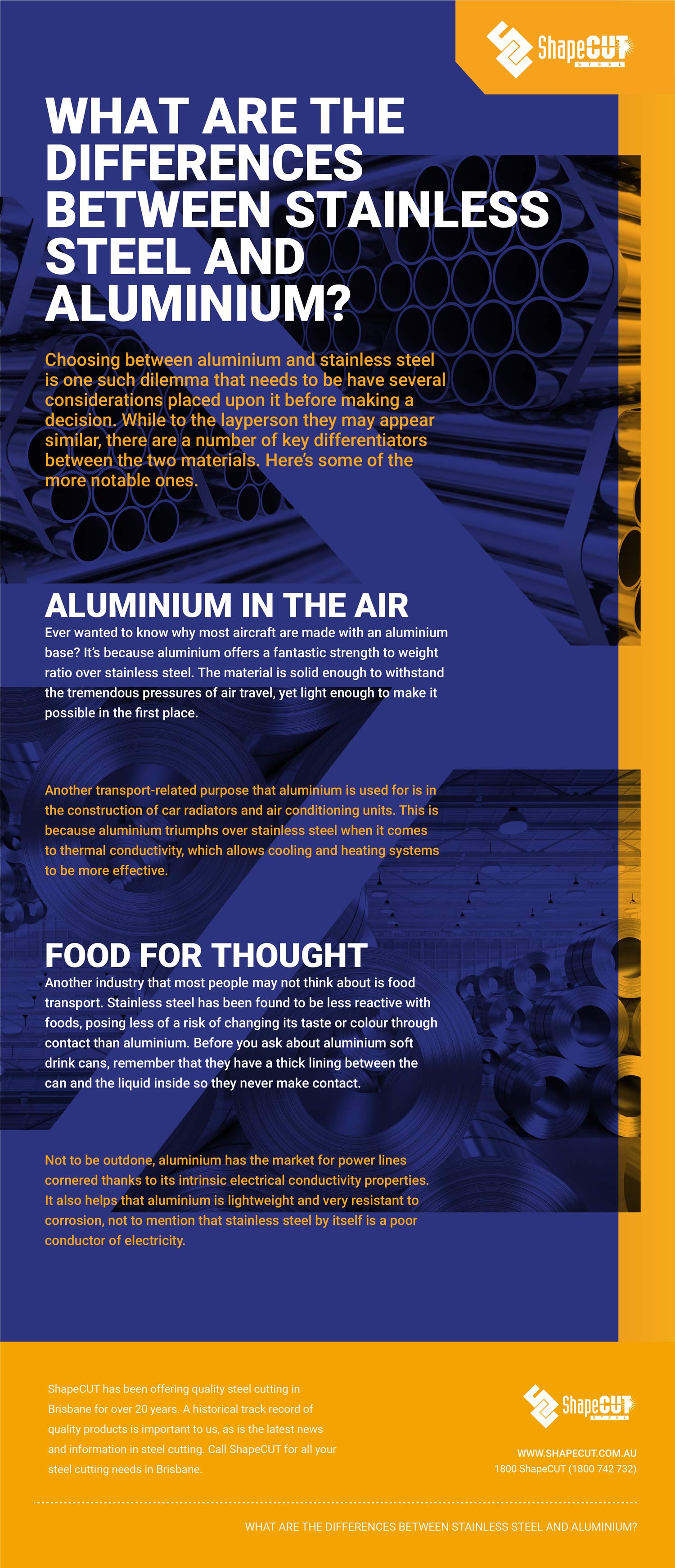Knowing what material to use for your next project is just as important as deciding how it will look or how it will be used. With the right building materials your construction can be made to stand the test of time, but otherwise it could end in disaster.
Choosing between aluminium and stainless steel is one such dilemma that needs to be have several considerations placed upon it before making a decision. While to the layperson they may appear similar, there are a number of key differentiators between the two materials. Here’s some of the more notable ones.
Aluminium in the air
Ever wanted to know why most aircraft are made with an aluminium base? It’s because aluminium offers a fantastic strength to weight ratio over stainless steel. The material is solid enough to withstand the tremendous pressures of air travel, yet light enough to make it possible in the first place. At the scale of a commercial airliner, even a slight difference in weight between the two materials equals a massive difference in the overall weight of the aircraft, which would in turn mean more propulsion be needed to maintain lift and more fuel required to keep it going.
Another transport-related purpose that aluminium is used for is in the construction of car radiators and air conditioning units. This is because aluminium triumphs over stainless steel when it comes to thermal conductivity, which allows cooling and heating systems to be more effective.
Where stainless steel comes into its own, however, is with welding. Stainless steel’s durability and solidity makes it an easy material to weld, while aluminium fares much poorer under the welding arc. It’s a stronger material so is more able to be reshaped without losing any of its core tensile strength. It’s also able to be worked with at higher temperatures than aluminium, which becomes too soft to be useful after 200 degrees Celsius.
Food for thought
Another industry that most people may not think about is food transport. Stainless steel has been found to be less reactive with foods, posing less of a risk of changing its taste or colour through contact than aluminium. Before you ask about aluminium soft drink cans, remember that they have a thick lining between the can and the liquid inside so they never make contact. (Another reason aluminium is used so much in food production is that it’s decidedly cheaper than the alternatives, being a cheap commodity item)
Not to be outdone, aluminium has the market for power lines cornered thanks to its intrinsic electrical conductivity properties. It also helps that aluminium is lightweight and very resistant to corrosion, not to mention that stainless steel by itself is a poor conductor of electricity.
The team at ShapeCUT have been working with every type of steel grade available and can cut, bend and reshape steel into any shape imaginable. Contact the team at ShapeCUT today to find out more about what material is right for your next project.
Images: Greenaval Yachts

Contact Us To Find Out More
We ensure a fast, exact and economical steel solution for our clients. Call our team today to discuss your steel cutting and metal processing requirements.
Get Our Newsletter
Contact details
121 Mica Street, Carole Park,
QLD, 4300, AUSTRALIA
Freecall: 1800 SHAPECUT (1800 742 732)
Telephone: (07) 3271 5600
Facsimile: (07) 3271 5454
Email: sales@shapecut.com.au
Accredited Profile Cutting

Profile Cutting
Metal Processing Services
©2025 ShapeCut | Website design Brisbane by iFactory | Privacy Policy | Search | Sitemap



